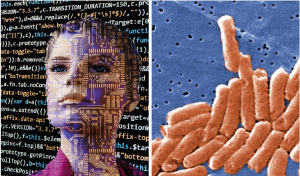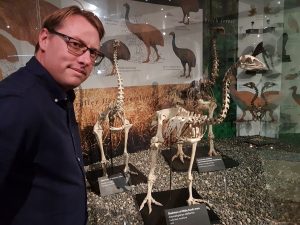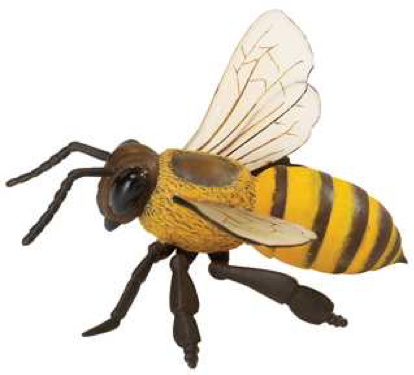Kiwi and moa teach us about what makes species different
The kiwi, the emu, the moa, the cassowary, the rhea, the ostrich. They’re all part of a group of flightless birds from the Southern hemisphere known as ratites, and they’re giving us some very cool lessons on how animals evolve.
Otago Biochemistry’s Dr Paul Gardner and his bioinformatic colleagues from Harvard University, the Welcome Sanger Institute, and the Universities of Texas and Toronto have been using DNA sequences from these birds to figure out how species evolve, at the DNA level.
New species, new information – how our native species can benefit from genomics

The face of nature’s stream cleaner – a kōura shows off some of the six pairs of appendages that make up their mouths, as well as their huge front claws. Image source: RNZ National
Mary Hawkes explains her work helping to make genetic resources for New Zealand’s kōura (freshwater crayfish).
New Zealand is a country with weird, wonderful, and unfortunately endangered native species that have spent millions of years evolving in a unique ecosystem. From the kākāpō to the tuatara, conservationists are now using genomic data to help preserve our natural heritage. Continue reading
AI vs evolution
 Artificial intelligence gets a lot of scare stories in the media at the moment. But AI is a powerful tool that can be used for good as well, especially in fields that now generate tons of data, like medicine.
Artificial intelligence gets a lot of scare stories in the media at the moment. But AI is a powerful tool that can be used for good as well, especially in fields that now generate tons of data, like medicine.
One of the big challenges in modern medicine is keeping ahead of the microbes that cause infectious diseases. Can AI, in particular a small part of AI called machine learning, help us detect and stop deadly infectious diseases before they spread and become harmful epidemics? Continue reading
Plastic Honeybees
Bees are plastic!
Well, they’re not actually made out of plastic (at least not usually), I mean the other meaning of plastic: easily shaped or moulded.
One set of genes can develop into one of a variety of slightly different bodies, depending on what environment those genes are exposed to. This plasticity is part of how an organism adapts to changes in their environment.
In other words, bees can change their bodies when something in their environment changes. And this happens without the bees changing their genes. Continue reading



